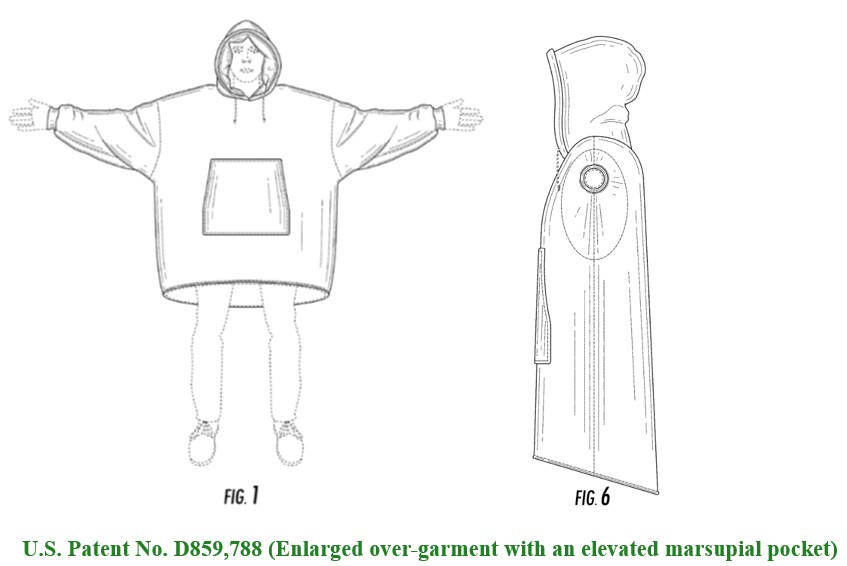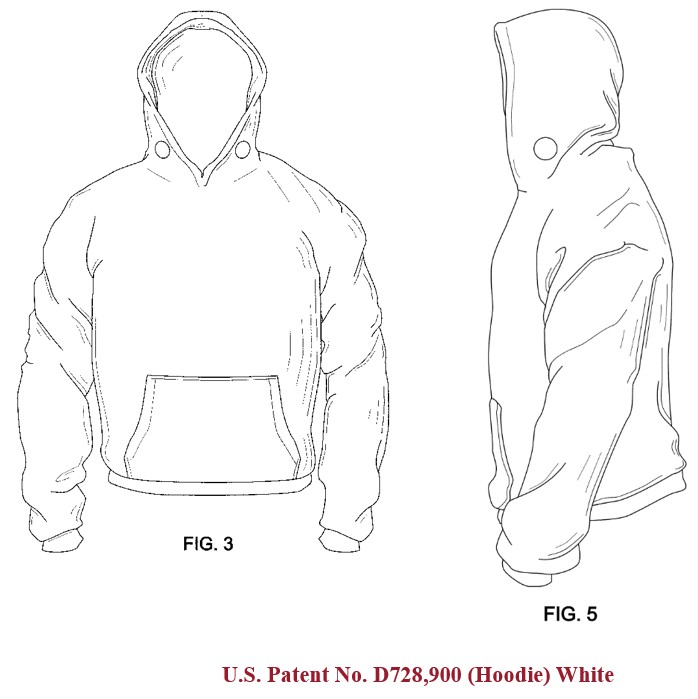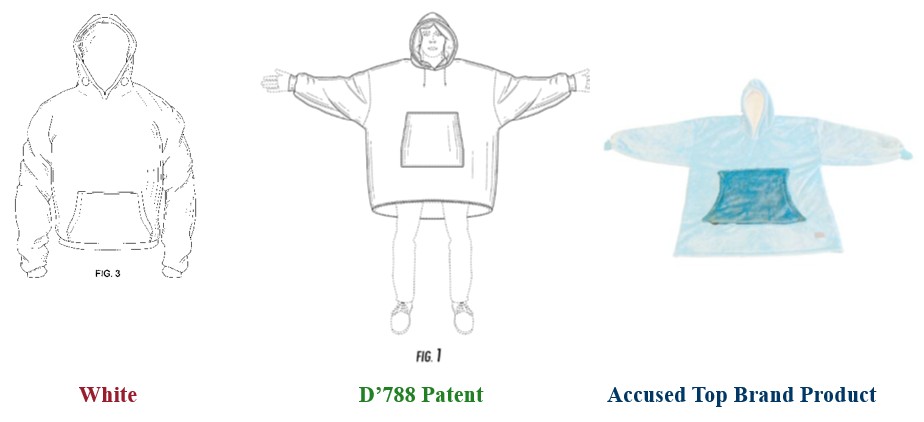Not Close Enough for Cozy Comfort: Latest Design Patent Prosecution History Estoppel Case at the Federal Circuit
22 Aug 2025 | Newsletter
On July 17, 2025, the United States Court of Appeals for the Federal Circuit held that arguments Cozy Comfort made during prosecution to distinguish over a prior art design limited the scope of Cozy Comfort’s design patent under the doctrine of prosecution history estoppel. As a result, the Federal Circuit reversed the jury verdict below that Top Brand infringed Cozy Comfort’s design patent.
Top Brand and Cozy Comfort compete in the market of oversized hooded sweatshirts. Cozy Comfort owns U.S. Design Patent No. D859,788 (the “D’788 Patent”), entitled, “Enlarged over-garment with an elevated marsupial pocket.” Figures 1 and 6 of the D’788 Patent are reproduced below.

During prosecution of the application that issued as the D’788 Patent, the design patent examiner at the United States Patent and Trademark Office rejected the application as alleged anticipated under 35 U.S.C. § 102 by an earlier design patent, U.S. Design Patent No. D728,900 to White (“White”), entitled, “Hoodie.” Figures 3 and 5 of White are reproduced below.

During prosecution, Cozy Comfort accepted that the prior art White design and its claimed design were “unquestionably similar,” but had certain visual differences, such as:
- a marsupial pocket with a different shape and placement on the garment (much higher, above bottom of torso, narrow);
- larger sleeves in its claimed design; and
- a bottom hem that slopes downwards from the front to the back of the garment.
After reviewing Cozy Comfort’s response, the design patent examiner allowed the application without comment.
Cozy Comfort accused Top Brand of infringing the D’788 Patent via certain of its hooded sweatshirts and wearable blankets. In response, on February 20, 2020, Top Brand LLC and Sky Creations LLC filed a declaratory judgment action against Cozy Comfort in the United States District Court for the Northern District of Illinois, seeking determinations of noninfringement and invalidity of the D’788 Patent. The case was then transferred to the United States District Court for the District of Arizona. Cozy Comfort counterclaimed for infringement of the D’788 Patent and asserted trademark infringement under the Lanham Act.
Below is a visual comparison between White, the D’788 Patent, and one of the accused designs.

Before the district court, Top Brand advocated for a detailed verbal limiting claim construction of the D’788 Patent based on Cozy Comfort’s statements during prosecution. The district court declined to adopt this claim construction. At trial, the jury was instructed that it “must determine whether or not there is infringement by comparing the accused products to the design defined in the [D’788 Patent].” The jury held that Top Brand (A) failed to invalidate the D’788 Patent; (B) infringed the D’788 Patent; and (C) infringed Cozy Comfort’s trademarks. The jury awarded $15.4 million in disgorged profits for Top Brands infringement of the D’788 Patent.
On appeal, the Federal Circuit first confirmed that prosecution history estoppel applies to design patents, consistent with its earlier decisions in Pacific Coast Marine Windshields Ltd. v. Malibu Boats, LLC (Fed. Cir. 2014) and Curver Luxembourg SARL v. Home Expressions (Fed. Cir. 2019). The Federal Circuit then applied the three-stage prosecution history estoppel analysis to find that prosecution history estoppel barred infringement here.
In particular, the Federal Circuit held that:
- Cozy Comfort had surrendered claim scope by arguing visual differences over the prior art White design, including focusing on, “the shape and placement of the marsupial pocket and shape of the bottom hem line”;
- Cozy Comfort’s surrender was for reasons of patentability, because its arguments were made to secure allowance over the prior art White reference; and
- Top Brand’s accused designs fell within the surrendered claim scope, because the accused products had a pocket and sleeves that the Federal Circuit deemed similar in shape to the design shown in White, and by arguing visual differences in shape, Cozy Comfort had surrendered claim scope.
A more prudent approach may have been for the Federal Circuit to avoid deciding the factual issue of whether Top Brand’s designs fell within the scope of the surrender and instead remand the case to the district court to decide. This would have been similar to how the Federal Circuit ruled in its earlier Pacific Coast Marine Windshields decision, where the court held that prosecution history estoppel applied where the patentee failed to protect certain unelected embodiments in response to a restriction requirement but remanded the case to the district court to decide whether the accused design was within the scope of the surrender.
What can design patent applicants take away from this decision? With confirmation from the Federal Circuit once again that prosecution history estoppel applies to design patents, design patent applicants should be careful when making amendments, as well as arguments, during prosecution. Pacific Coast Marine Windshields taught design patent applicants filing multi-design applications that they should plan to protect all examined embodiments or they may be surrendering claim scope. Curver Luxembourg taught design patent applicants that the choice of title is important since it can limit claim scope and amendments to the title should be avoided if possible and carefully made when necessary. And now, Top Brand teaches design patent applicants to focus their arguments on differences in the overall appearance of their claimed design when comparing the design to asserted prior art references.
